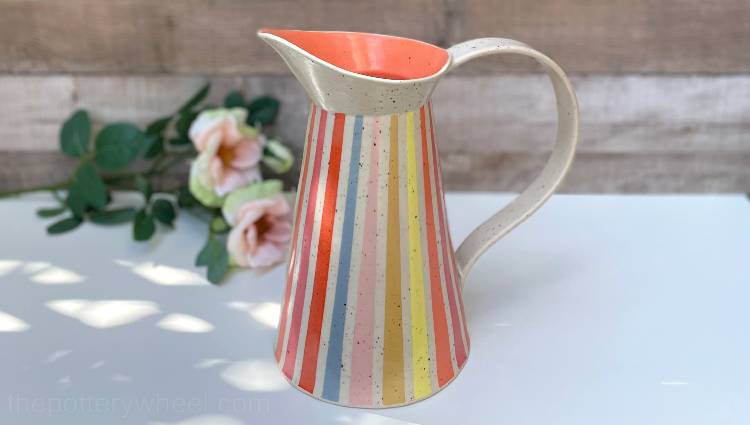Your cart is currently empty!
Magic Water for Pottery – How to Make It and Use It
Published:
Last Updated:
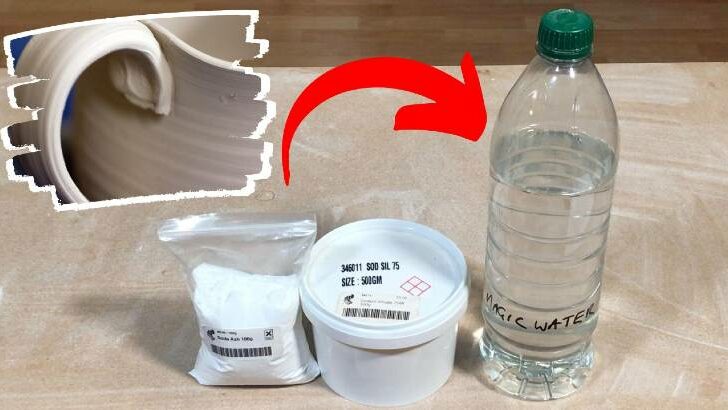
Affiliate Disclaimer
As an affiliate, we may earn a commission from qualifying purchases. We get commissions for purchases made through links on this website from Amazon and other third parties.
Joining pieces of clay can be tricky. Clay seams can split or crack as the clay dries or is fired and handles can separate. Luckily there are a number of things you can do to prevent this from happening. A simple way to avoid cracked joints in clay is to make some magic water for pottery.
In this article, I will cover the following:
- How to make magic water (it’s super easy)
- Using magic water
- Why magic water works (it’s not really magic)
- Alternatives to magic water that you can try too
So, let’s start off first by looking at how to make magic water…
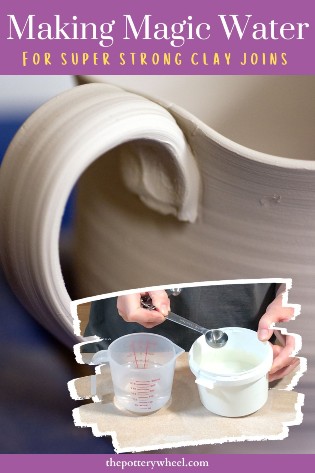
What is Magic Water Made From?
Magic water is made out of three ingredients. They are:
- Water
- Liquid sodium silicate
- Soda ash
The original recipe for magic water is attributed to the potter Lana Wilson. The measurements cited in the original recipe were as follows:
- 1 gallon of water
- 3 tablespoons of sodium silicate
- 1½ teaspoons of soda ash
This would make a very large quantity of magic water. A gallon is a lot! I have adjusted the quantities so that when I make a batch, I’m making just over a pint.
Considering that you will be using magic water to join pieces of clay and fix cracks in clay, a pint will last a long time.
These are the adjusted quantities that I use:
- 1 and a third pints of water
- ½ tablespoon of liquid sodium silicate
- ¼ teaspoon of soda ash
There is a handy calculator on the Ceramic Arts Network to help you work out the exact ratios for the quantity you want to make. You can check that out here if you like.
How to Make Magic Water for Pottery
Basically, you need to mix all the ingredients together, and you don’t have to add them in any particular order.
However, I’ve found that the following method works well.
- Fill up an old plastic bottle with 1 and a third pint of water.
- If the bottle has a wide neck you can pour the other ingredients directly into the water without spilling them.
- If the bottle has a narrow neck, then pour about a cup of the water into a measuring jug that you can pour with easily.
- Add a ½ tablespoon of liquid sodium silicate to the cup of water.
- Add a ¼ teaspoon of soda ash to the cup of water and stir the ingredients together.
- Pour the cup of water back into the plastic bottle of water and store it with the cap on.
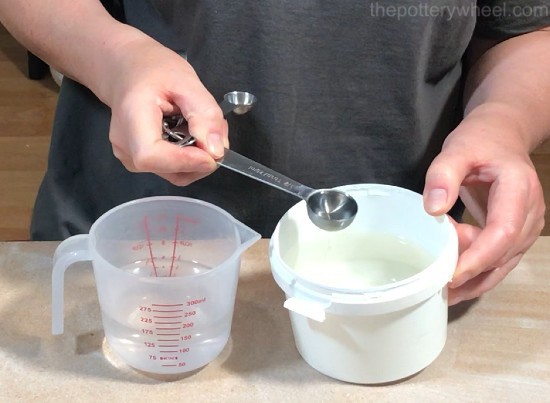
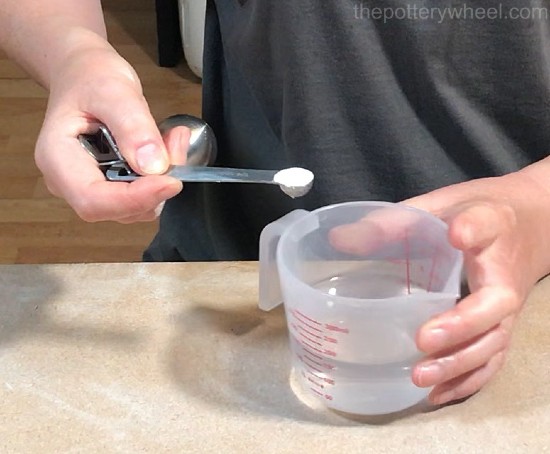
Where to Get the Ingredients for Magic Water for Pottery
Here are some links to where you can buy the ingredients:
Alternatively, you can buy soda ash here, as it’s the same product used as a dye fixative for coloring fabric.
Soda ash is also known as sodium carbonate. And although you can buy laboratory-grade soda ash (as in the link above), some washing soda is also made from soda ash. For example, Arm and Hammer Super Washing Soda is made of sodium carbonate too.
It’s also handy to have these measuring tools to measure out tablespoons and teaspoons accurately:
How Does Magic Water Work?
Magic water is usually used to create a strong bond between pieces of clay. It’s also used to fix cracks in greenware clay too. Greenware clay is pottery that has not been fired yet in a kiln.
There are a couple of reasons why it works so well for bonding and fixing clay. The first reason is that both sodium silicate and soda ash are deflocculants. A deflocculant in pottery is a substance causes clay and glaze to become runnier and more liquid.
So, when magic water is added to greenware clay it makes the particles of clay move more freely. This means that when you press pieces of clay together, they key into one another, forming an intermingled layer. The other reason that magic water creates a strong join is that sodium silicate is a solution of silica (source).
As the kiln cools the molten glass hardens and creates ceramic matter that is strongly bonded together. This is called vitrification. Magic water creates strong bonds by introducing additional silica to the clay joints.
What’s more, because the magic water is a mild deflocculant, the silica can travel deeper into the layers of the clay.
How to Use Magic Water
I use magic water for two main purposes. They are:
Joining Pieces of Clay
Magic water can be used to join pieces of clay in the same way that you would use slip when you slip and score. I find it works best when joining clay that is leather hard.
Score into the clay that you want to join, using whatever scoring tool you prefer. This can be a serrated rib tool, a clay scoring tool, a needle tool, or even an old kitchen fork.
Apply some magic water to the scored surfaces. Press the two surfaces together gently but firmly.
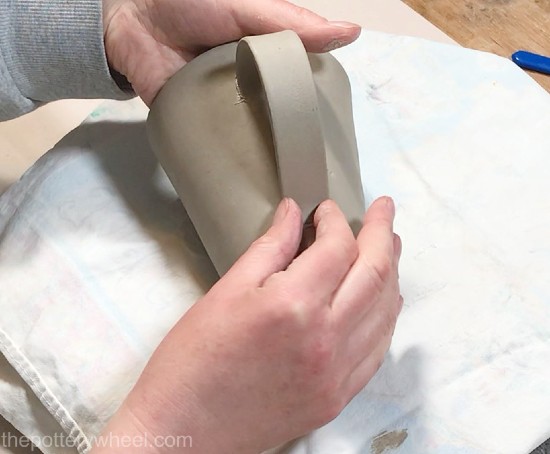
Tidy up any clay slip that has squeezed out from the joint with a soft brush. Magic water will create a strong bond between the two pieces of clay. Nevertheless, when I’m attaching handles, I normally add a small coil of clay to the top edge of the joint. This ensures that the handle is absolutely secure.
Fixing Repairs in Cracked Greenware
When clay dries, it shrinks. If part of your pottery is shrinking at a faster rate than another, then cracks can form where the clay is under too much stress.
You can use magic water to fix cracks that appear when your pottery is drying. This is how I use it to repair cracks:
- Apply magic water to the cracked area of clay
- Use a sharp tool to scratch into the crack. This will open up the area around the crack
- You may need to add more magic water if your clay is very dry
- Keep adding small amounts of magic water to the crack and scoring into the clay until you have created some slip on the surface of your work
- Add some paper clay slip or spooze to the area that needs to be mended
- Allow this to dry and then sand down the repaired patch
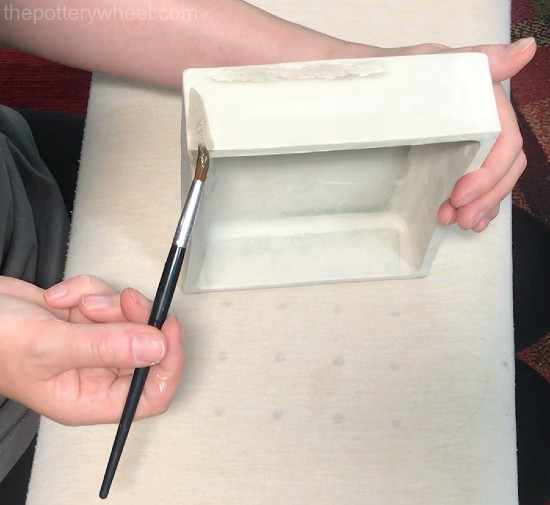
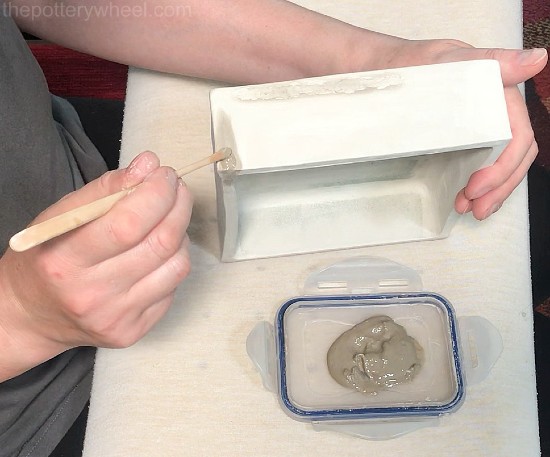
You can read more about how to use magic water to fix cracks in dried clay here.
Where to Buy Magic Water
Although it’s very easy to make magic water, you can buy it if you don’t have the time or inclination to make your own. Laguna Clay sells ready-made magic water that you can buy here.
Alternatives to Magic Water
To join pieces of clay together there needs to be enough moisture in the clay so that the two surfaces key into one another. You can introduce moisture to clay in a few ways. One way is to score the surfaces you want to join and then simply add water, or regular clay slip to the scored areas.
However, some joints in clay are more vulnerable to cracking than others. An example of this is hard slab pottery. It can be helpful to use a super-charged bonding agent like magic water when joining clay that is on the drier side of leather hard.
But magic water isn’t the only way to join clay. Some other ways of adding moisture and strength to joints are paper clay slip and spooze. Here are the recipes for both…
Paper Clay Slip
- 1 cup of white vinegar
- Blend 4 or 5 sheets of toilet paper into the white vinegar with a stick blender
- Add enough crumbled-up bone dry clay to the mixture to make a slurry-type slip that has the consistency of chocolate mousse.
- Leave to sit overnight
Spooze
- 1 part white vinegar
- 1 part corn syrup
- And, 1 part broken up bone dry clay
I find it best to mix the white vinegar and corn syrup together first. Then add the bone-dry clay afterward. Stir the mixture and leave overnight to allow the bone-dry clay to slake down completely into the liquid.
Both paper clay slip and spooze make very good bonding agents. You can watch my video on mending cracks in clay here to see me making magic water, paper clay slip, and spooze.
Final Thoughts
Magic water is one of the easiest and most effective tools you can have in your pottery tool kit. Although I can’t guarantee that you will never get cracks in your pottery again, it will definitely decrease the likelihood of cracks appearing. So, why not give it a go?


